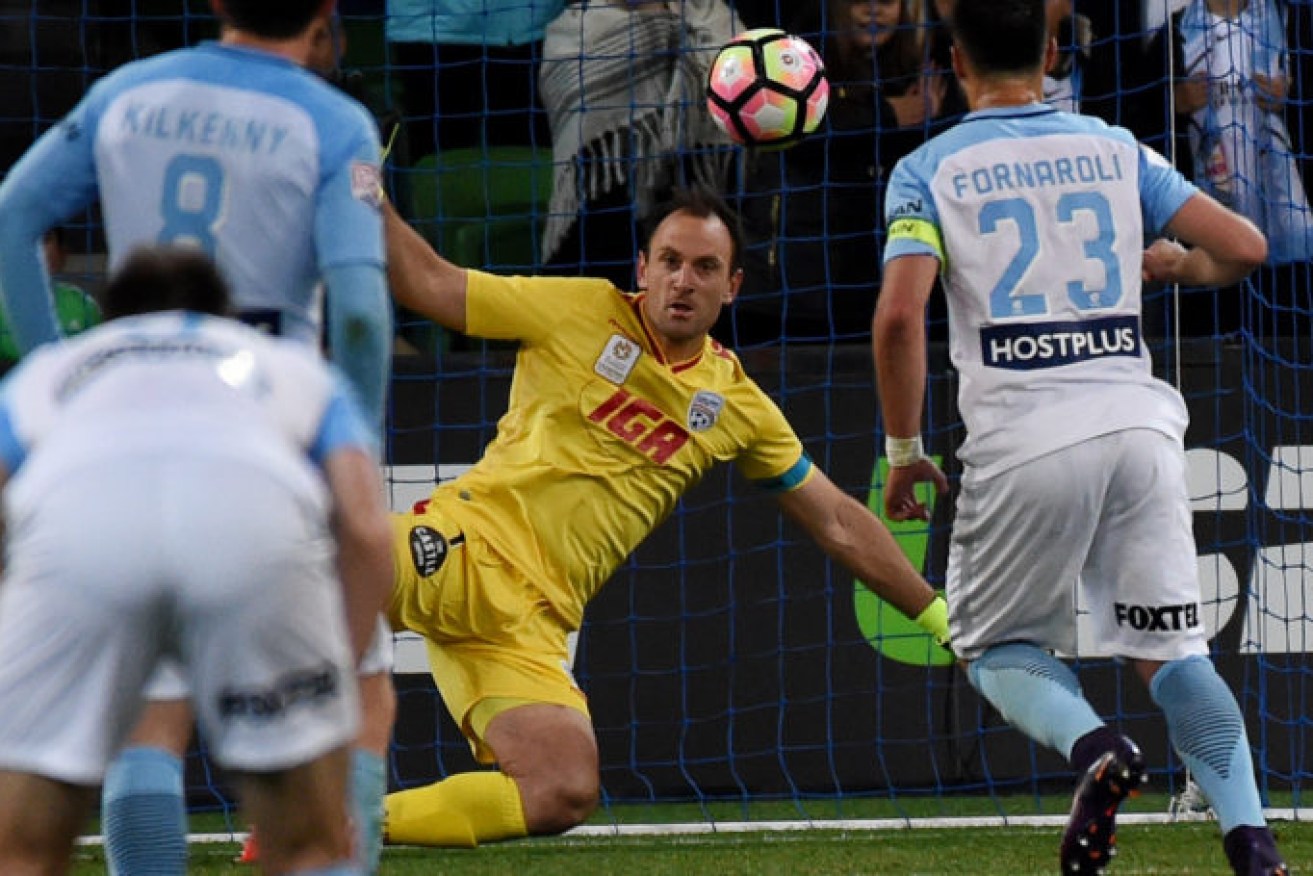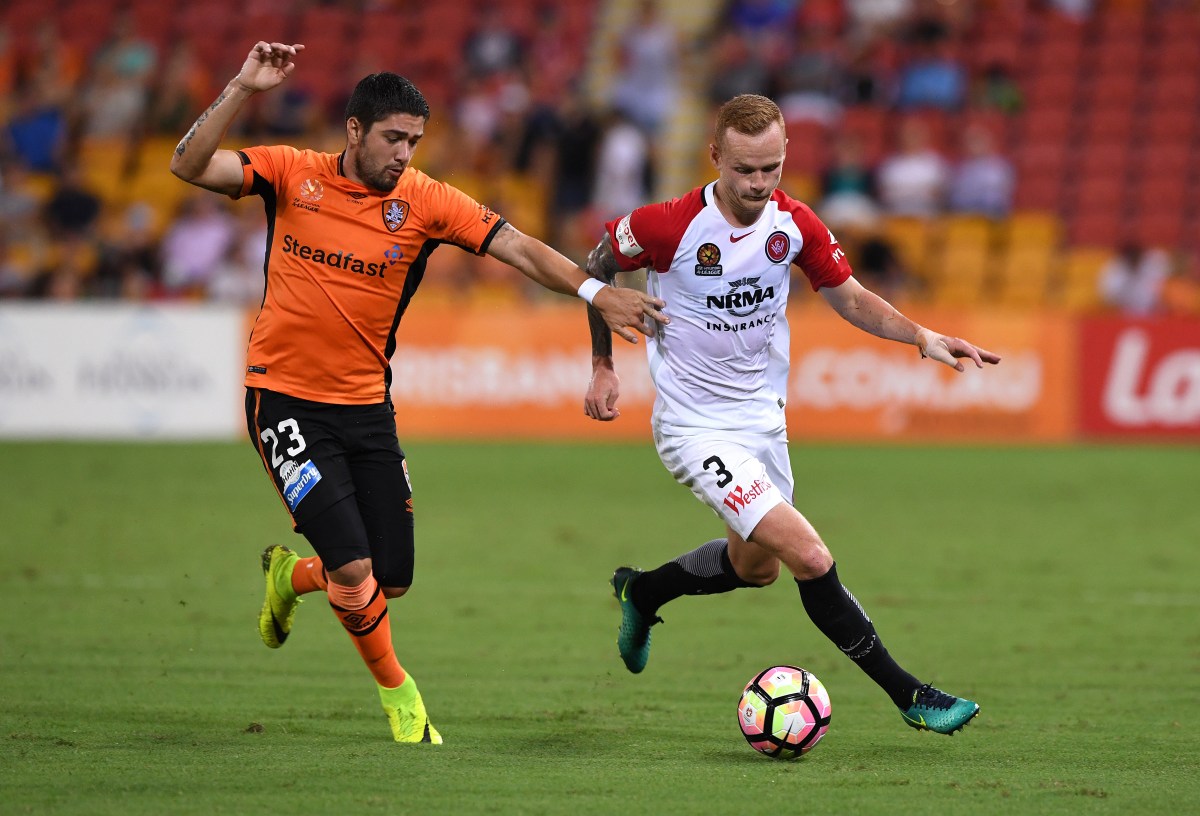Marcuccitti: This is no salary cap system – it’s red tape
The A-League’s salary cap is a great idea for encouraging fairness and equality among clubs, writes Paul Marcuccitti… but for one small thing. It doesn’t work.

As a loyalty player, Eugene Galekovic can receive payment outside the salary cap. Photo: Tracey Nearmy / AAP
Dimitri Petratos is a 24 year-old A-League player who has an increasingly familiar looking CV.
Appearances in Australian youth teams? Check. A short stint playing in Asia? Check. More than one A-League club? Check.
Last week the Sydney-born Petratos, currently with Brisbane Roar, signed a three-year deal with Newcastle Jets. Brisbane’s media release says that he’ll “return to New South Wales at season’s end to be closer to his family”.
But Fox Sports pundit and former Socceroos goalkeeper Ante Čović saw the move in another light. He said:
“This is where the salary cap hurts teams. You’ve got young players who come through, do well, but this is the reality of Australian football where it’s very difficult for clubs to keep those players.
“You can’t blame the players for wanting to better their career and get to a stage where they’re the best. While it’s fantastic Brisbane Roar have these great young players to build up, it’s a harsh reality where they’re at an age where they have opportunities to explore.
“With a salary capped league, success is punished.”
Wait. Wait.
The A-League still has a salary cap? How can this be?
You really have to question whether the cap is doing what it’s designed to do
If Melbourne City is paying more than $9 million in player wages, and Sydney FC has previously topped $6.5 million, while other clubs are paying around $2.5 million, where is this “cap”?
In fairness to Football Federation Australia, it publishes details about its “salary cap system” on the A-League’s website.
But it lists no less than nine ways in which payments can be made outside the salary cap.
That includes several player categories, such as designated players (ie marquees), guest players (which must satisfy FFA-prescribed marketability criteria), homegrown players, loyalty players, mature age rookies and youth players.
And while clubs might be trying to use some or all of those allowances to increase their spend, they have to keep an eye on the other rules, such as ensuring that their squads have: no more than 23 players and no less than 20; a minimum of three Australians under 20; and a maximum of five foreigners.
Which, in total, must receive a minimum of $2.34 million in salaries and a maximum of $2.6 million… not including all the payments in that list of exemptions.
This isn’t a “salary cap system”. It’s red tape.

ROAR TALENT: Dimitri Petratos (left) competes with the Wanderers’ Jack Clisby. Photo: Dave Hunt / AAP
Because another way of looking at it is that there is no limit on the amount of money clubs can spend on players as long as they meet certain criteria and comply with a list of rules.
That list of rules, however, is so restrictive that it effectively forces player movement.
Ante Čović either suspects or knows that Brisbane felt it couldn’t offer Dimitri Petratos a deal to match Newcastle’s without severely limiting its allowable spending on other players next season. Roar already has Brett Holman and Tommy Oar on marquee deals for 2017/18.
But at the moment Newcastle has more room to move. And as that’s a normal state of affairs in the A-League, every season will inevitably bring a lot of player movement. All it takes is one club at its maximum spend to be paying Bloggs $100,000 while another one has room to offer $150,000.
When the A-League began in 2005, the system was simpler. A club could only have one marquee, a guest player was limited to four appearances so it didn’t matter too much, and most of the other ways payments could be made outside the cap didn’t exist.
Those special payments have mostly been brought in for good reasons. For example, the mature age rookie gives clubs extra incentive to take a player in a state-based competition and give him a chance in the A-League.
Some are designed to stem the tide of player movement: loyalty players are those that have been at one club for at least five consecutive years; homegrown players have come through a club’s youth system.
But they will only go so far. As long as other constraints exist, the merry-go-round will continue at a furious pace.
Moreover, clubs must devote time, and staff salaries, to working out how to be as competitive as possible, not just with the resources they have available but with all the league-imposed rules and restrictions.
There have been plenty of calls to scrap the cap. I’ve never been in that boat (my main concern is that its floor – the minimum amount that clubs have to spend on player wages – is too high).
But when you have a club spending three or four times more than most while relatively small wage differences are encouraging transfers between others, you really have to question whether the cap is doing what it’s designed to do.
What is certain is that if FFA tried the sort of red tape reduction scheme that governments often attempt, this is where anyone engaged to do it would start.
Paul Marcuccitti is a co-presenter of 5RTI’s Soccer on 531 program which can be heard from 10am on Saturdays.




